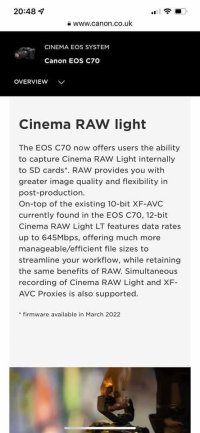Usually a combination of all the above, plus far more usability and features from an ergonomics standpoint. A cinema camera has tons of ports, expandability, etc. outside of the technical capabilities. Look at a C300 Mark III - it can be applied to so many types of productions because of its sheer versatility in its body design, let alone its technical image quality like it's DGO sensor quality, internal raw, 4K/120P raw, etc.
The R5 may seem more advanced, but that's just from an optics standpoint (not glass lol). 8K, full frame, etc. are great, but at the compromise of having to serve a hybrid nature. The DGO sensor is purpose built for video. It's smaller at Super35, but only like under 9MP, so it has a much larger pixel pitch. It's also dual gain output which is essentially a real-time HDR recording from the sensor, vs the standard front side intake of the R5 sensor. Because of such, despite the FF sensor, it still has far less dynamic range than the Super35 DGO. It seems Clog3 already pushes the limits of that sensor, whereas Clog2 really is designed to exploit the added range from these video-specific sensors like the DGO one.
Like mentioned above, these DGO cinema cameras can see in the dark so cleanly. I've used an R5 and R6 as compliment B or C cameras on some shoots and although they are great that they can match the C300 MIII for some shot matching, you can see the difference in the images when you have to push them a bit. The R5/R6 get a lot noisier a lot faster and their higher ISO noise is certainly more prominent. The DGO sensor stays so clean for so long as you go up the ISO.
So just holistically, the whole system for a cinema camera is more purpose built, hence why you get much better video quality potential. It comes from both the better technical specs of the imaging system, combined with the ergonomics and expandability provided by the bodies of these cameras.

